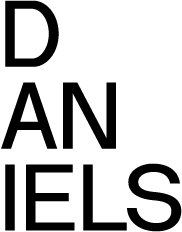22.11.10 - Adrian Blackwell Participates in Residency in RMB City
December 4, 2010-January 14, 2011
Gendai Gallery, 6 Garamond Court, Toronto
Opening Reception: Saturday, December 4, 2-5pm
Manifesting inside Gendai space at the Japanese Canadian Cultural Centre and the on-line virtual world Second Life simultaneously, Residency in RMB City is a virtual residency programme intertwining with an actual exhibition, staged to experience, reflect, and agitate the contingencies and resistances around the thresholds of the virtual a! nd the actual in response to the augmented reality our everyday inhabits.
Three proposals originally developed for Chinese artist Cao Fei's RMB City in Second Life are put forward by Toronto-based artist/architect, Adrian Blackwell; artist, Yam Lau; and the collaborative team GestureCloud: Judith Doyle + Fei Jun. These interventions are predicated on three distinctive thematic inquiries into the actuality of this virtual city: architecture and urban development with Adrian Blackwell, the aesthetics of time, space and image with Yam Lau, and labour and production through the lens of art and technology with GestureCloud.
Lóng Sùshè (Dormitory), Adrian Blackwell
This dormitory is an essential infrastructure for RMB City. Inspired by a very long dormitory in a town called Shajing in Bao’an County, Shenzhen, it is a building that never ends, forever under construction at one end and constantly falling apart at the other. Sociologist Pun Ngai has called the form of production ubiquitous in southern China a ‘dormitory labour regime,’ because it relies on the precarious work of migrants from rural China, called “farmers” by the household registration system, despite the fact that they work in factories and live in urban spaces. This dormitory is called ‘Lóng Sùshè’ in Mandarin, which means ‘Dragon Dormitory.’ The dragon is the sign of the Chinese sovereign and it is often used as a metaphor to describe the Chinese economy. According to French sinologist Francois Jullien, the dragon symbolizes the power that lies in a certain disposition of things in space and time. China has assumed its ascendant position in the global economy on the foundation of the productivity of its mobile and temporary workforce. The hands of these workers have made many of the commodities on which we rely for communication, work, and play in our daily lives. The dormitory is both the crucial apparatus that serves as the minimal space of social reproduction, regulating the worker’s movement outside the factory, and a potential locus for labour struggles and resistance to this disciplinary system.
Princess Iron Fan, Yam Lau
Yam Lau’s avatar Princess Iron Fan is a mythological character in popular Chinese culture. Incidentally, Princess Iron Fa! n is also the main character in the first feature length animatio n of the same title produced in China in 1941. The appearance of Lau’s avatar is based on its former animated incarnation.
In response to the current residency in RMB City (Second Life) and at Gendai Gallery, Princess Iron Fan is incarnated into different spatial/temporal expressions. She assumes a minimal, almost less than virtual presence in Second Life but an almost physical presence in Gendai Gallery. In both instances, it is the “almost” that sets her apart from the respective environments, installing a definitive sense of remoteness that befits her aristocratic dignity.
GestureCloud, Judith Doyle + Fei Jun
GestureCloud is an ongoing collaboration of Judith Doyle and Fei Jun, that questions how labour is transposed via gesture across networked conditions, to have material effects elsew! here in the world. For example, can surplus labour in a factory in China activate events in virtual conditions? Can this accrue value that returns to the factory workers? In Beijing, GestureCloud‘s field research included video documentation at the Antron Printing factory. Workers actions were performed for motion capture, transposed as data to Second Life and used as gesture files to animate virtual objects, including a specialized avatar, Gesture Warden. With electronics sourced from Beijing’s surplus markets, the team including Jim Ruxton and Ken Leung built a robotic projector that is controllable across a network using Pure Data or Processing.
For "Residency in RMB City", GestureCloud examines underlying structures of virtual worlds and labour. A prototype robot projector is installed to move a worker-avatar through the various production zones of the gesture factory installation. The avatar's factory work is animated using a new custom set of motion-captured gestures.
__________________________________________________________________________________________
About RMB City
RMB City is a virtual realm in the online world of Second Life, initiated by Beijing artist Cao Fei (SL: China Tracy). It is the condensed incarnation of contemporary Chinese cities with most of their characteristics; a series of new Chinese fantasy realms that are highly self-contradictory, inter-permeative, laden with irony and suspicion, and extremely entertaining and pan-political. Launched in 2008, and open to the public since January 2009, RMB City is a conceptual space that can also be utilized as mode of artistic creation, an experimental platform on which Cao Fei and her collaborators use different mediums to test the boundaries between virtual and physical existence. As a model of avant-garde urban planning, it traverses the boundaries between past and future, real and vi! rtual to link China and the cosmopolitan world.
Please click here for more information on all the various related events.

